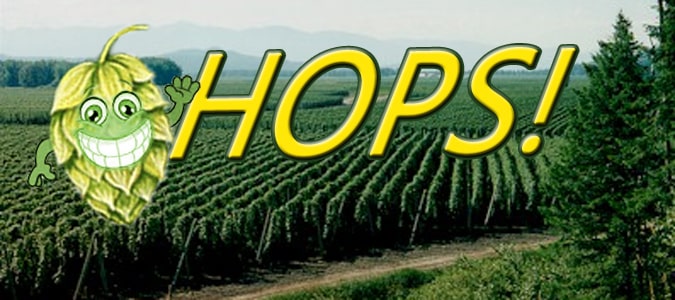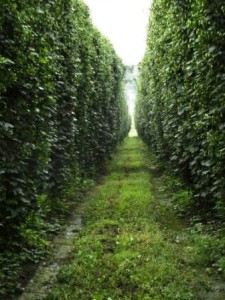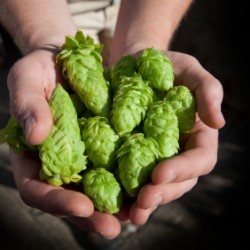
We throw around hop terminology a lot at American Craft Beer and as a result can lose sight that for some the mere mention of Saaz hops is borderline gibberish… So here are some hop variety basics that might help…
The Hop Basics, Basics
 Beer is basically made up of four ingredients…malt, water, yeast and hops. And hops only came to the forefront in the 16th century when it replaced herbal mixtures called gruit as the drink’s primary preservative.
Beer is basically made up of four ingredients…malt, water, yeast and hops. And hops only came to the forefront in the 16th century when it replaced herbal mixtures called gruit as the drink’s primary preservative.
But in addition to helping beer last longer, hop oils added aromatic and bittering qualities that were quickly embraced. And over the eons different hop varies evolved, every one of them with distinct taste and aromatic characteristics…
Today, experimental hop development is at the cutting edge of brewing and new varieties are making their way into beer recipes with increasing frequency.
But to keep things simple we’re breaking hop varieties out into the broadest regional groupings rather than by genus (we’ll leave that to the industry professionals and plant biologists!).
The Noble Hops
Although it sounds ancient and regal, the term Noble hops actually came into common usage in the 1980’s as a marketing reference “meant to set apart from the world’s hundreds of hop varieties a select few, venerable Continental European {varieties}” according to Craft Beer & Brewing.
Known for their fragrant floral, spice and herbal notes, this group of hops, which generally includes Saaz, Tettnanger, Hallertauer and Spalt among others, are primarily grown in continental Europe.
And not surprisingly the Noble Hop varieties are most commonly associated with Pilsners and German Lagers.
English Hops
English Hops didn’t actually originate in England…
They were first introduced to England by “Flemish farmers who had fled their homeland—a major hop producing area in the High Middle Ages—during the French–English Hundred Years War (1336–1453)” according Craft Beer & Brewing. And over the decades English hops took on a different character due to the island’s shorter and wetter hop growing season.
Known for their earthier woodland and pine characteristic English hops meld ideally with the hefty malt backbone that define the more classic British Pale Ales.
Two of the most prominent English hops are Fuggles, Northern Brewer and Kent Goldings.
American Hops
American Hops are essentially the evolution of a collection of native wild-type genotypes, a few transplanted European varieties cultivated from imported rhizomes by US-developed cultivars. And thanks to nearly ideal growing conditions those hops flourished in Washington State’s Yakima Valley, the largest hop-growing area in the United States.
With the emergence of craft beer, American hops have been embraced and are now widely used by brewers around the world. Perhaps the most prominent American hops are Cascade, Centennial, Chinook Citra and Amarillo. but given the US’ dynamic hop industry exciting new hop varieties are constantly coming to the forefront.
 American Craft Beer The Best Craft Beer, Breweries, Bars, Brewpubs, Beer Stores, And Restaurants Serving Serious Beer.
American Craft Beer The Best Craft Beer, Breweries, Bars, Brewpubs, Beer Stores, And Restaurants Serving Serious Beer.
